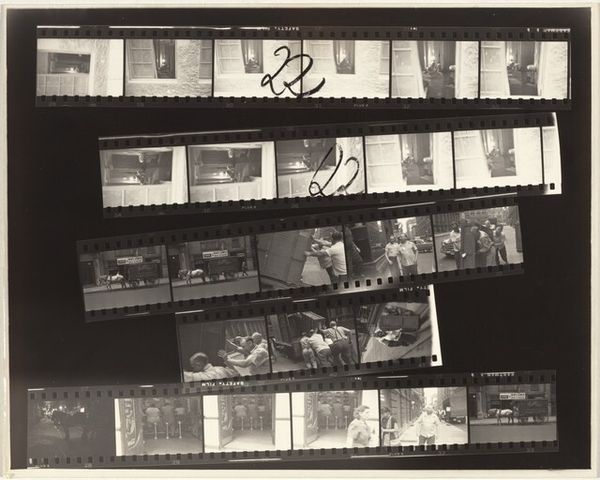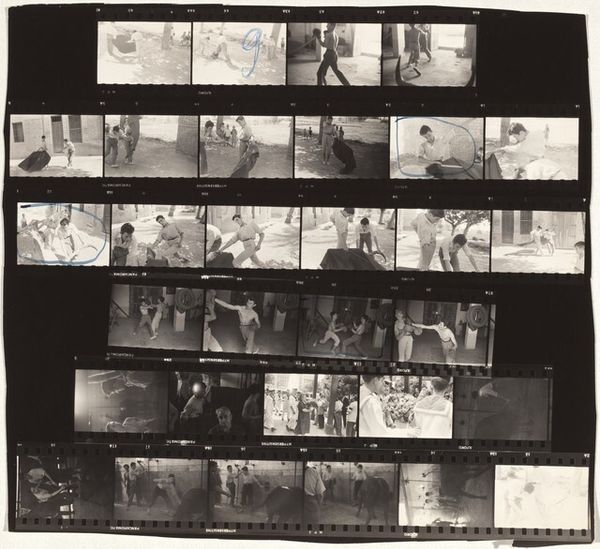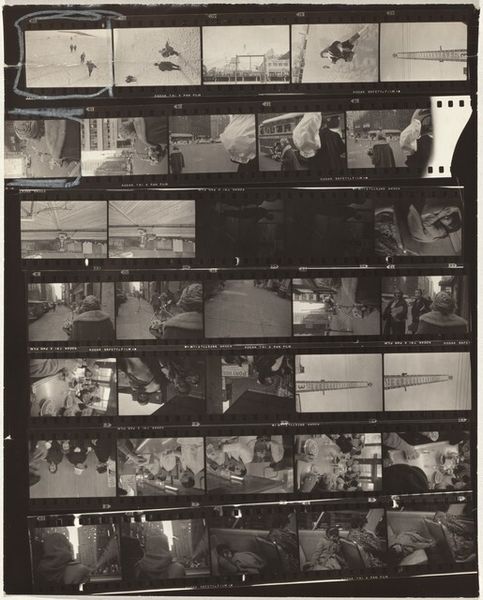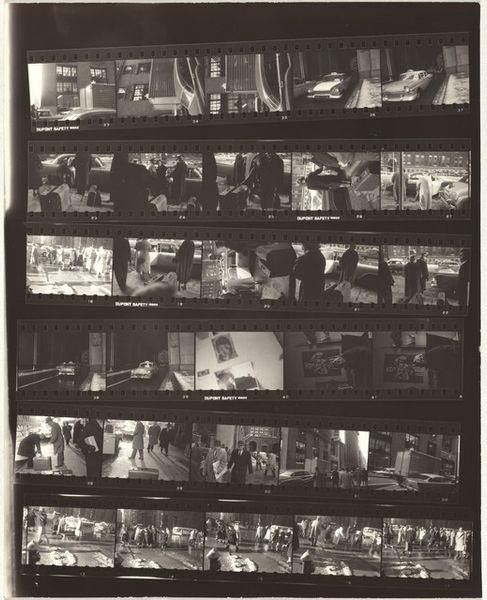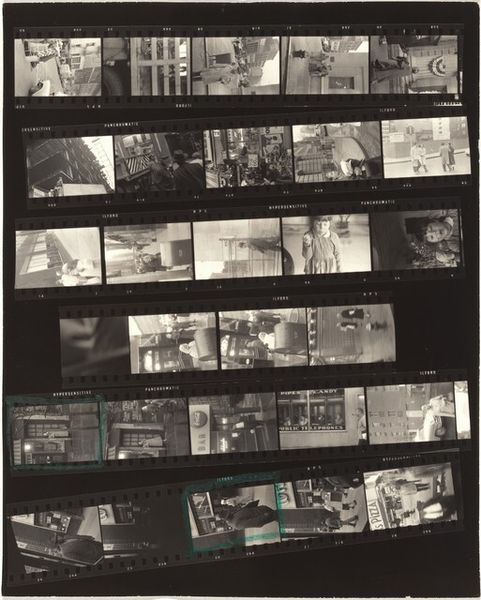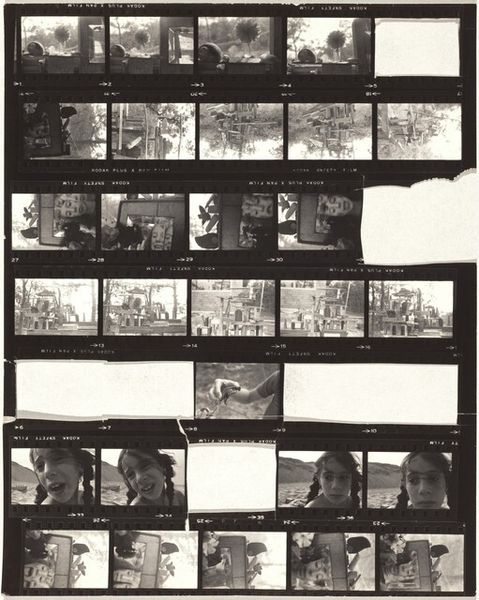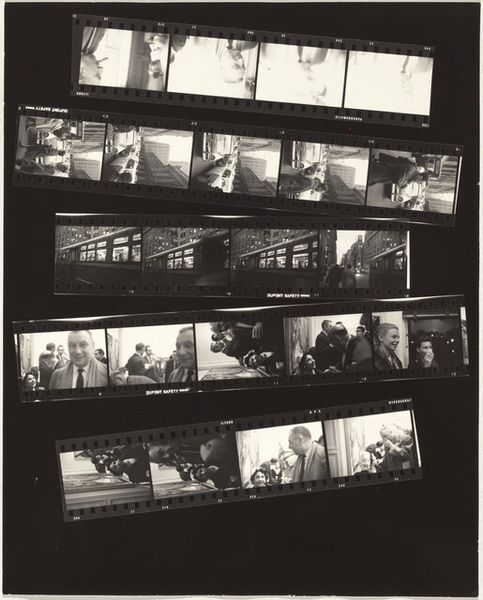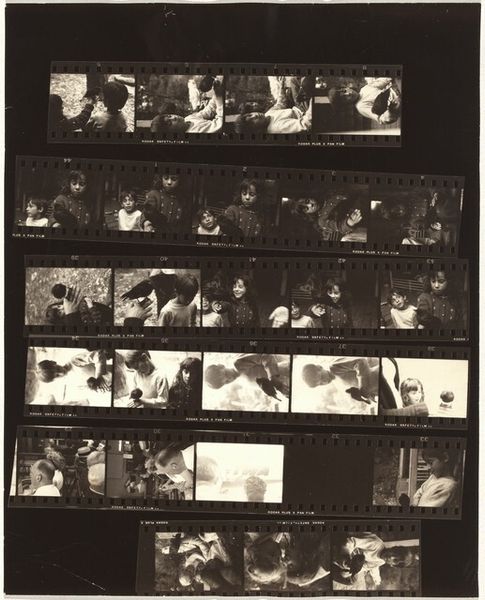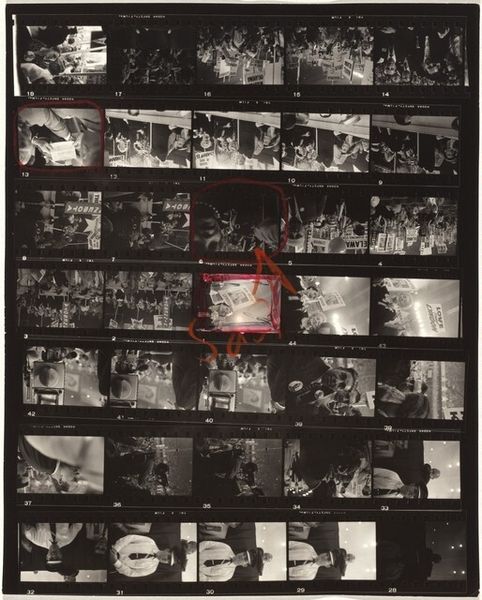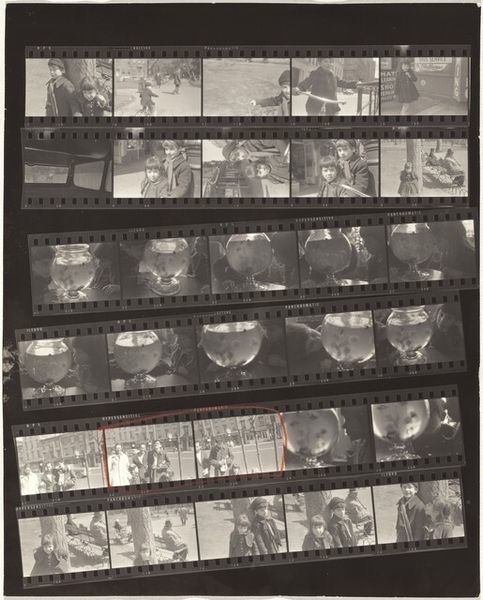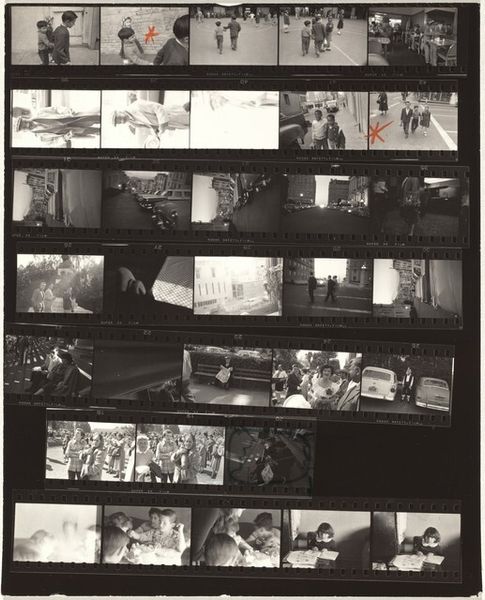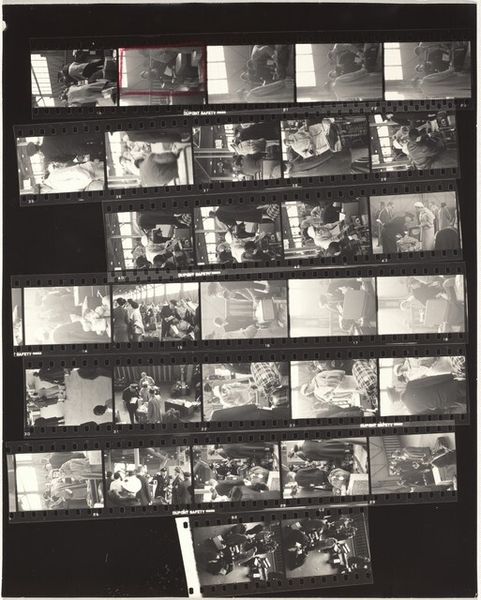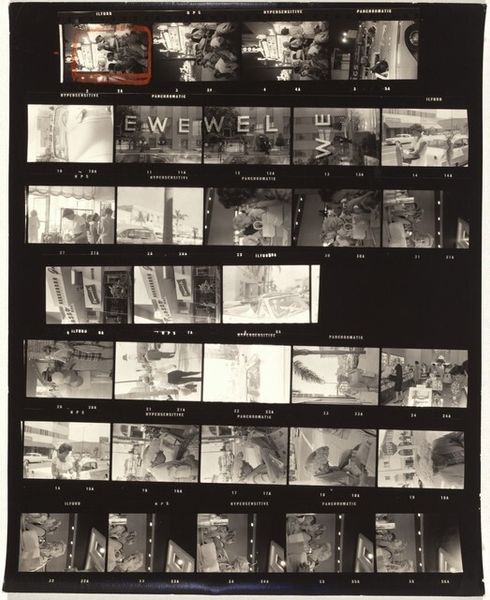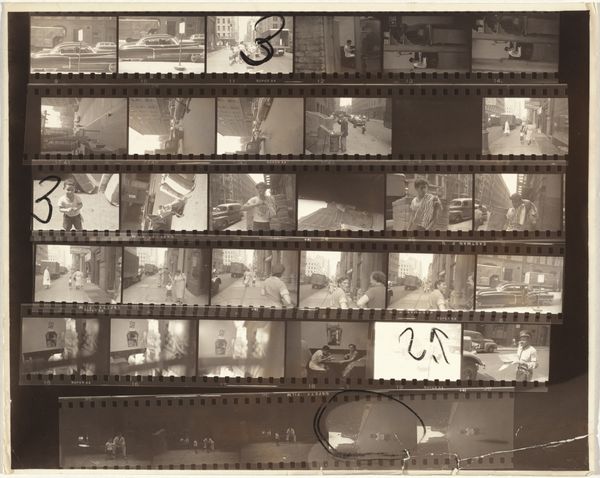
Dimensions: overall: 20.2 x 25.2 cm (7 15/16 x 9 15/16 in.)
Copyright: National Gallery of Art: CC0 1.0
Curator: Looking at Robert Frank's "11th Street story 35," a gelatin silver print from 1951, the first thing that strikes me is its raw, almost fragmented quality. It feels less like a composed image and more like a glimpse into a fleeting moment. Editor: The array of figures framed by what looks like New York street blocks builds that mood considerably. Beyond that documentary feel, do you perceive Frank aiming for any kind of symbolism with his placement and subject in this work? Curator: Absolutely, but that is more implied in a way that seems in tune with photographic movements arising out of post-impressionism; what makes his practice distinctive from them however, lies perhaps more squarely in his emphasis on photographic agency. We understand how an image from New York operates due to mass imagery in magazines, film and media. And there's an important relationship between seeing and interpreting an image when it references this framework, especially during the 1950s when it was produced. Editor: So, it's less about singular symbols and more about cultural and societal semiotics? That raises fascinating questions. Like, the presence of these ordinary New Yorkers, their faces etched with untold stories—they could signify something, beyond what it is on the surface. Curator: Indeed. Consider also the fact that Frank was a Swiss immigrant in America at that time. There are underlying sociopolitical layers operating here, perhaps tied to his experiences and artistic sensibilities within that environment. Frank gives us the scene but with a certain lack of reverence towards social and public American roles, as were otherwise highly produced during this time. Editor: So, what you're suggesting is that "11th Street Story 35" offers not just a view of urban life but a social commentary shaped by the artist’s biography as a foreigner finding his artistic voice in 1950's America? Curator: Precisely. It highlights the powerful dialogue between the personal and the socio-political that often characterizes art that’s attempting to be as objective as possible. Editor: This has added many things to consider! Thanks for opening it up for me.
Comments
No comments
Be the first to comment and join the conversation on the ultimate creative platform.
